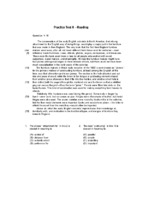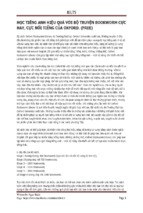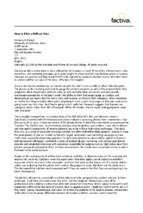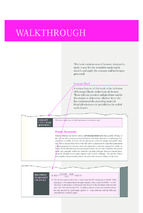1
For other titles in the Wiley Finance series
please see www.wiley.com/finance
2
Trading Economics
A Guide to Economic Statistics
for Practitioners and Students
Trevor Williams
Victoria Turton
3
This edition first published 2014
© 2014 Trevor Williams and Victoria Turton
Registered office
John Wiley & Sons Ltd, The Atrium, Southern Gate, Chichester, West Sussex,
PO19 8SQ, United Kingdom
For details of our global editorial offices, for customer services and for
information about how to apply for permission to reuse the copyright material
in this book please see our website at www.wiley.com.
All rights reserved. No part of this publication may be reproduced, stored in a
retrieval system, or transmitted, in any form or by any means, electronic,
mechanical, photocopying, recording or otherwise, except as permitted by the
UK Copyright, Designs and Patents Act 1988, without the prior permission of
the publisher.
Wiley publishes in a variety of print and electronic formats and by print-ondemand. Some material included with standard print versions of this book
may not be included in e-books or in print-on-demand. If this book refers to
media such as a CD or DVD that is not included in the version you purchased,
you may download this material at http://booksupport.wiley.com. For more
information about Wiley products, visit www.wiley.com.
Designations used by companies to distinguish their products are often
claimed as trademarks. All brand names and product names used in this book
are trade names, service marks, trademarks or registered trademarks of their
respective owners. The publisher is not associated with any product or vendor
mentioned in this book.
Limit of Liability/Disclaimer of Warranty: While the publisher and author
have used their best efforts in preparing this book, they make no
representations or warranties with the respect to the accuracy or completeness
of the contents of this book and specifically disclaim any implied warranties of
merchantability or fitness for a particular purpose. It is sold on the
understanding that the publisher is not engaged in rendering professional
services and neither the publisher nor the author shall be liable for damages
arising herefrom. If professional advice or other expert assistance is required,
the services of a competent professional should be sought.
Library of Congress Cataloging-in-Publication Data
4
Williams, Trevor, 1957–
Trading economics : a guide to economic statistics for practitioners &
students / Trevor Williams, Victoria Turton.—1
pages cm.—(The Wiley finance series)
Includes bibliographical references and index.
ISBN 978-1-118-76641-5 (hardback)—ISBN 978-1-118-76631-6 (ebk)—
ISBN 978-1-118-76638-5 (ebk)—ISBN 978-1-118-76629-3 (ebk) 1. Finance—
Statistics. 2. Money market—Handbooks, manuals, etc. I. Turton, Victoria,
1974– II. Title.
HG176.5.W55 2014
330.01′5195—dc23
2014007150
A catalogue record for this book is available from the British Library.
ISBN 978-1-118-76641-5 (hardback) ISBN 978-1-118-76631-6 (ebk)
ISBN 978-1-118-76638-5 (ebk) ISBN 978-1-118-76629-3 (ebk)
Cover image: Shutterstock.com
5
CONTENTS
Acknowledgements
Introduction
Surprise Indices
Mapping a New Landscape
Note
1 Surveys
Surveys and Behavioural Economics
Types of Survey
Business Surveys
Consumer Surveys
Conclusion
Notes
2 Economic Growth
Economic Growth Through the Ages
GDP
What is GDP?
Breaking Down GDP
Why is GDP important? How is It Measured?
Index Numbers of GDP and the Price Deflators
Used in Calculating Them
Detailed Breakdown of the GDP Measures
A Market Link
Components of GDP
Conclusion
6
Notes
3 Labour Markets
Employment Trends
What has Driven the Change?
Consequences for Economic Growth
Phillips Curve Shows no Durable Trade-Off Exists
NAIRU Matters More
Employment Measures
Why We Measure Unemployment
The Nature of Unemployment
The Impact of Demographics on Labour Markets
Vacancies
Changing Labour Patterns
The UK in Comparison to Its Global Competitors
How do We Extract Value from This?
Conclusion
Notes
4 Inflation
What is Inflation?
The History of Inflation
Causes of Inflation
Earnings/Wage Inflation
Price Basket
How is Price Inflation Measured?
GDP Deflator
7
Why so Many Measures of Inflation?
A Focus on the CPI and RPI
Why is Inflation Important?
Deflation
Other Measures of Inflation Targeting
How can We Extract Value from This?
Conclusion
Notes
5 Monetary Statistics
Monetary Policy and Inflation Management
The UK in a Global Context
Central Bank's Role
What About the Bank of England?
How Monetary Policy Works in the Uk
Decomposition of Money
Why does Money Supply Matter?
Why Is This Sort of Analysis Useful?
A Brief History of Monetary Targeting
How Do We Extract Value from This?
Conclusion
Notes
6 Fiscal Indicators
A Brief History of UK Fiscal Policy
Measuring Government Debt
Fiscal Policy Impact and Terminology
8
The Impact of Government on Markets
Fiscal Policy and Growth
The Data We Should Consider
Fiscal Policy in Boom and Bust
Market Relevance
Bank of England Regains Regulatory Powers
What Role Does the Office for Budget
Responsibility Play in the Fiscal Policy Process?
The Monetary Policy Committee
Forward Guidance – Another Bank Innovation
The Debt Management Office's Role
Comparison of International Debt
Fiscal Targets Add Credibility to Debt Reduction
How Can We Extract Value from This?
Conclusion
Notes
7 Global Trade Statistics
What Is a Country's Balance of Payments?
Why Do We Measure the Balance of Payments?
What Does It Mean?
The Concept of the Balance of Payments
UK Is not Alone in Having a Trade Deficit
A Chronic Goods Deficit
A Chronic Services Surplus to Offset (Almost) the
Trade Deficit
9
The Ever-Changing Pattern of Visible and Invisible
Trade
Balance of Payments and GDP
Shifting Trade Patterns
How Can We Extract Value from This?
Conclusion
Notes
Conclusion
Be anchored to the data flow
Some key points to take away
Note
Appendices
Appendix 1 Surveys
CBI Industrial Trends Survey
CBI Distributive Trades Survey
Notes
Appendix 2 Bank of England: Agents' Summary of
Business Conditions (January 2014)
Appendix 3 Inflation: Contributions to Change in
the 12-Month Rate
Appendix 4 Voting on Interest Rates by the
Monetary Policy Committee – 1997 to January
2014
Appendix 5 Voting on Asset Purchases Financed
with central bank reserves by the Monetary Policy
Committee – March 2009 to January 2014
10
Bibliography
Index
End User License Agreement
List of Tables
Chapter 2
Table 2.1
Table 2.2
Table 2.3
Table 2.4
Table 2.5
Table 2.6
Table 2.7
Table 2.8
Table 2.9
Chapter 3
Table 3.1
Table 3.18
Table 3.19
Chapter 4
Table 4.1
Table 4.2
11
Table 4.3
Table 4.4
Chapter 6
Table 6.1
Table 6.2
Chapter 7
Table 7.1
Table 7.2
Table 7.3
List of Illustrations
Chapter 1
Figure 1.1 UK equity prices rise as PMI's suggest a
strong economic recovery is underway.
Figure 1.2 Bond yields rise as PMI's suggest a
strong economic recovery is underway.
Figure 1.3 Sterling rises vs US$ as PMI's suggest a
strong economic recovery is underway.
Figure 1.4 Sterling rises vs euro as market thinks
interest rates may rise as growth picks up.
Figure 1.5 Regional UK economic activity – PMI
balances.
Figure 1.6 CBI confidence measure vs FTSE.
12
Figure 1.7 Confidence vs investment spending.
Figure 1.8 Confidence vs manufacturing output.
Figure 1.9 Business confidence leads sterling vs
the US dollar.
Figure 1.10 UK business and consumer
confidence.
Figure 1.11 Lloyds Bank Business Barometer
measures firms' confidence against the
performance of the FTSE All-Share.
Figure 1.12 UK trade-weighted exchange rate vs
Business Barometer.
Chapter 2
Figure 2.1 The world until 2000.2
Figure 2.2 Annual GDP in the UK over the past 50
years.
Figure 2.3 Global GDP growth (per cent; quarter
over quarter, annualised).
Figure 2.4 Output indices by sector, UK.
Figure 2.5 UK chart by different measures.
Figure 2.6 Summary of statistics for Q4 2012
quarter-on-quarter growth. GVA, gross value added;
CVM, chained volume measure; CP, current prices;
SA, seasonally adjusted.
Figure 2.7 Gross operating surplus of
corporations, % growth, quarter on quarter.
13
Figure 2.8 Compensation of employees, %
growth, quarter on quarter.
Figure 2.9 Manufacturing growth, % quarter on
quarter.
Figure 2.10 Services growth, % quarter on
quarter.
Figure 2.11 Household final consumption
expenditure growth.
Figure 2.12 Gross fixed capital formation growth,
quarter on quarter.
Figure 2.13 Net trade, £(billion).
Figure 2.14 Net lending by sector (percentage of
GDP). PNFC, private non financial companies,
FINCO, financial companies, NPISH, non-profit
institutions serving household.
Figure 2.15 The UK saving ratio has now risen
after falling to zero.
Figure 2.16 UK household debt ratio has fallen,
but has it fallen far enough?
Figure 2.17 UK GDP does have a good link with
share prices.
Chapter 3
Figure 3.1 UK unemployment rate (aged > 16
years), seasonally adjusted.
Figure 3.2 UK employment rises even as GDP
growth stays flat, implying falling productivity.
14
Figure 3.3 Changes in employment since 2008.
Figure 3.4 Earnings growth in comparison with
price inflation.
Figure 3.5 No link between unemployment and
wage inflation over time?
Figure 3.6 The NAIRU suggest that the inflation
backdrop is benign.
Figure 3.7 UK labour market.
Figure 3.8 Length of unemployment – period
ending February 2013.
Figure 3.9 Length of unemployment –
comparison between February 2003 and February
2013.
Figure 3.10 Longer-term demographic trends in
the UK, by age.
Figure 3.11 Working-age population.
Figure 3.12 Growth slowing rapidly in workingage population.
Figure 3.13 Unemployment rate by age.
Figure 3.14 Young people in the labour market.
Figure 3.15 Summary of labour market statistics,
April 2013.
Figure 3.16 Number of claimants (excluding
clerical claims) by age and sex for March 2013,
seasonally adjusted.
15
Figure 3.17 Unemployment rate by gender.
Figure 3.20 How the inactivity numbers break
down.
Figure 3.21 Economic inactivity rate (aged 16–
64), seasonally adjusted.
Figure 3.22 UK labour participation rate.
Figure 3.23 UK vacancies.
Figure 3.24 Employment growth by occupation.
Figure 3.25 Employment statistics by sector.
Figure 3.26 Public sector employment by industry
for December 2012, seasonally adjusted.
Figure 3.27 Hours worked.
Figure 3.28 Unit labour costs and productivity
(output per worker).
Figure 3.29 Unemployment rate by region,
February 2013.
Figure 3.30 UK unemployment trends since
2000.
Figure 3.31 UK harmonised unemployment rate
in 2011.
Chapter 4
Figure 4.1 Price index over time.
Figure 4.2 A history of the increase in RPI.
Figure 4.3 Changes in goods prices explain overall
16
UK price inflation.
Figure 4.4 UK import prices vs goods price
inflation.
Figure 4.5 UK CPI vs foreign exchange rate.
Figure 4.6 Cost-push inflation as a result of OPEC
increasing its prices 10-fold in the 1970s. AD,
aggregate demand; AS, aggregate supply; Y, real
output.
Figure 4.7 Demand-pull inflation – arises when
aggregate demand in an economy outpaces
aggregate supply. AD, aggregate demand; AS,
aggregate supply; Y, real output.
Figure 4.8 Average earnings and consumer prices
annual growth rates.
Figure 4.9 GDP deflator showing percentage
increase in a year.
Figure 4.10 Factory gate output price inflation.
Figure 4.11 Factory input price inflation.
Figure 4.12 Difference between RPI and RPIJ,
percentage year on year.
Figure 4.13 Gap wedge between CPI and RPI.
Figure 4.14 Inflation against the Bank of
England's inflation target.
Chapter 5
Figure 5.1 Long-term trends in broad money
17
growth.
Figure 5.2 The velocity of money.
Figure 5.3 August 2013 CPI fan chart, based on
constant nominal interest rates.4
Figure 5.4 August 2013 GDP fan chart, based on
constant interest rates.55
Figure 5.5 Selection of central bank policies.
Figure 5.6 Asset prices and money supply.
Figure 5.7 Money supply and house prices.
Figure 5.8 UK monetary policy is the loosest in its
history.
Figure 5.9 QE transmission channels.
Figure 5.10 Velocity of broad money (ratio of
nominal spending to nominal broad money
holdings).
Figure 5.11 M4ex trend since 2007.
Figure 5.12 UK liabilities and assets of the
banking sector.
Figure 5.13 Counterparts to broad money growth
M4.
Figure 5.14 The impact of QE on the size of the
UK central bank balance sheet.
Figure 5.15 Quantitative easing has had little
impact on UK growth.
18
Figure 5.16 Interest rates and inflation.
Figure 5.17 M4 and inflation.
Figure 5.18 The longer-term relation between CPI
and M4.
Figure 5.19 UK M4 broad (adjusted) vs narrow
money M0.
Figure 5.20 Nominal GDP growth is analogous to
broad M4 money supply.
Figure 5.21 Twelve-month percentage growth in
M4 deposits by sector.
Figure 5.22 Twelve-month percentage increase in
M4 lending by sector.
Figure 5.23 The value of deposits and lending in
the UK over the 2012–13.
Figure 5.24 M4 and UK economic growth.
Chapter 6
Figure 6.1 A history of UK debt from 1692 to 2011
(public sector net debt).
Figure 6.2 UK debt has risen sharply since 2000.
Figure 6.3 Real GDP growth vs government debt
to GDP ratio. Higher debt ratio, slower growth.
Figure 6.4 New regulatory framework at the Bank
of England. FPC, Financial Policy Committee; FCA,
Financial Conduct Authority; PRA, Prudential
Regulation Authority.g
19
Figure 6.5 Major statutory decision-making
responsibilities of the Bank of England. For further
detail on the Special Resolution Regime, see
www.bankofengland.co.uk/financialstability/Pages/role/
www.hmtreasury.gov.uk/d/fin_fs_bill_mou_financial_crisis_ma
Figure 6.6 Membership of the Bank of England
bodies.
Figure 6.7 UK interest payments on the
government debt.
Figure 6.8 UK debt has moved up sharply but is
still below euro average.
Figure 6.9 UK up the debt ranking?
Figure 6.10 UK government debt compared with
other countries.
Figure 6.11 UK budget deficit will improve only
slowly.
Figure 6.12 It will be hard to cut government
spending.
Chapter 7
Figure 7.1 Exports and imports as a share of UK
GDP.
Figure 7.2 UK current account balance as a per
cent of GDP.
Figure 7.3 UK trade in services and goods.
Figure 7.4 Investment income: credits less debits.
20
- Xem thêm -




















